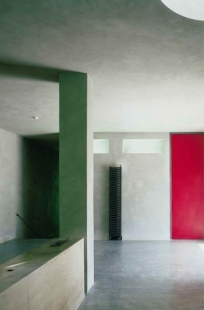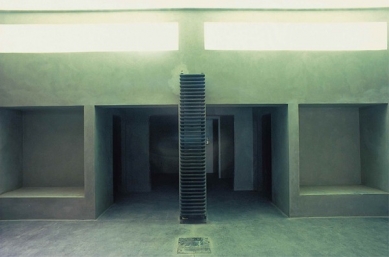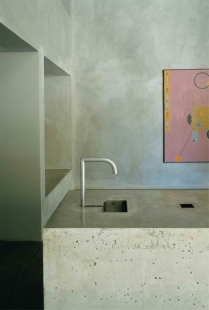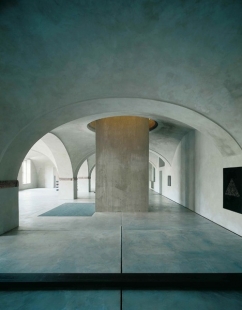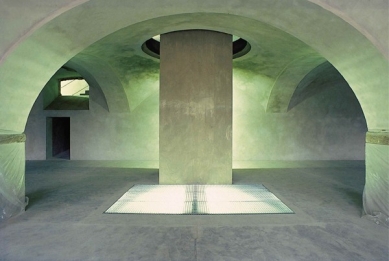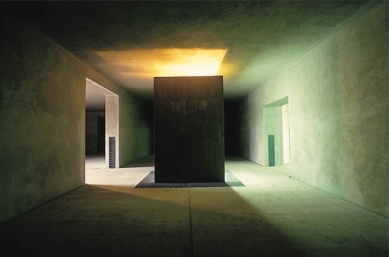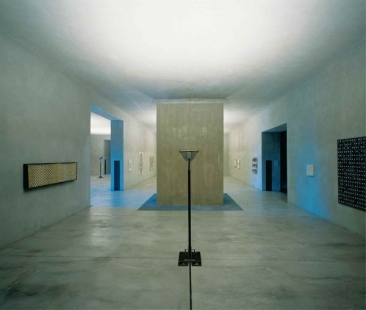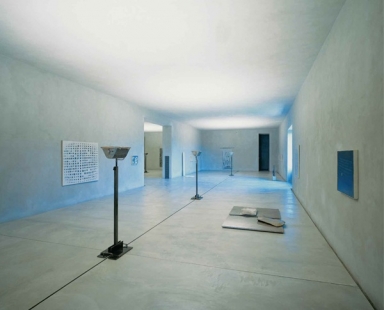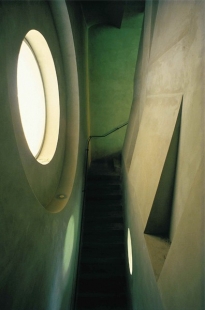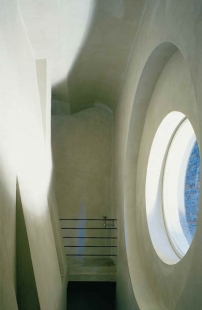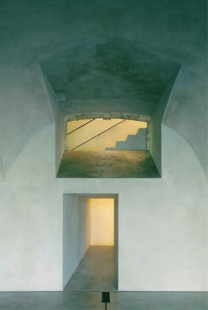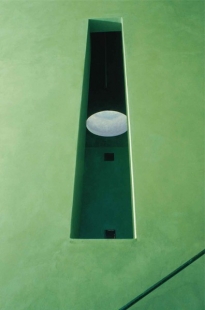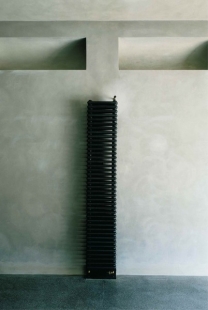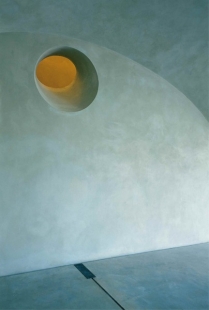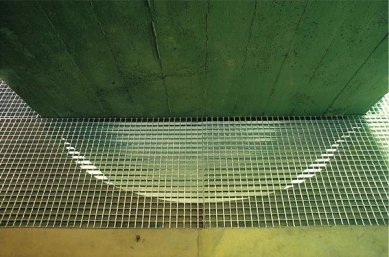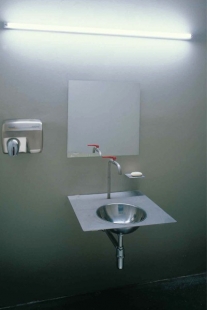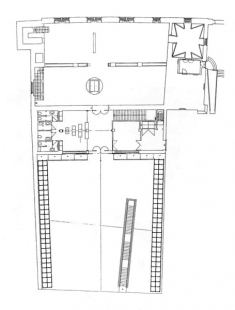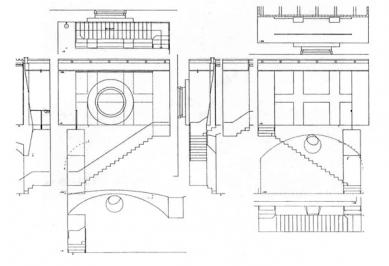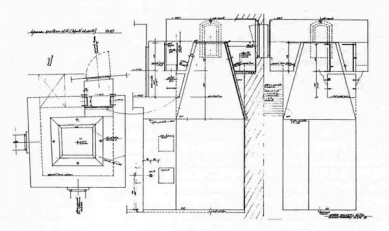
Gallery Benedikt Rejt

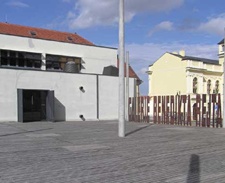 |
This gallery, specializing in the purchase of Czech abstract and minimalist art, established itself in the 1960s in an old brewery in the historic center of Loun. The brewery began to be modified for it, with a new, lower part to be added to its historic building, featuring an atrium in the middle. However, the construction work did not progress much before the arrival of the new gallery director, Dr. Alice Štefančíková, in 1989. In 1992, Štefančíková commissioned a new reconstruction study from architects Emil Přikryl, Tomáš Bezpalec, and Tomáš Novotný. Their proposal shifted the emphasis to the old brewery building: the architects intended to retain only three wings from the newer addition in a manner akin to an honor courtyard, as shown in their published drawings. After consultations with the client, Přikryl eventually decided to retain only a single wing adjacent to the brewery from the addition and equipped the empty space in front of the gallery with a simple wooden floor and embedded concrete pillars.
The entire object is situated on a slope of the defensive rampart, which faces the Ohře River. It is located on one of the streets leading to the square. A few meters from the building is a church by Benedikt Rejt. So, the location is truly ideal.
The entrance to the building is through the aforementioned deck with a grid of columns. This offset from the street line further emphasizes the significance of the institution and certainly does not go unnoticed by passersby. Thus, through the deck, we enter the gallery through simple doors of glass and steel.
The building has two floors. The second floor is also the entrance level. In the foyer, there is a ticket purchase counter, and on the other side, a cloakroom. The space literally draws the visitor in. Already from the entrance, one can overlook the entire depth of the building. There is a central axis from which the wings of the gallery spaces branch out. Everything is simple, adapted to function. One can descend a floor via the stairs or lift. Here, the visitor finally realizes they are in a historical building and begins to understand the connections. The view of the river through the openings of historical windows, aesthetically utilized parts of the original brewery layout, vaults, and pillars with rough, worn stone.
When you see the building for the first time, you will truly be very pleasantly surprised. Such a clean building from the outside, and so many ideas in one place. You will be captivated by the spotted concrete, the vertically placed heating units, and the shafts for electrical installations. You will be fascinated by the light that comes from undiscoverable places and falls precisely where needed. You will fall in love with the steel grids around the former brewery boiler exhausts. You will try to decipher the critics' objection that the architecture of the gallery overshadows the exhibited art. But it is better to encounter a beautiful girl in a beautiful garden than in a junkyard. The fact is that the gallery could exist on its own and exhibit only itself.
There is a clear respect for history. The shapes have been more or less retained; only the material has been adapted to contemporary requirements. The space, thanks to the use of light, seems to graduate, and when you are already completely at the front, it pulls you down a floor. The columns give the space a rhythmic division. It is clearly apparent where which artwork can be placed. Given that this is a gallery of modern art, the space is very flexible and allows for the exhibition of practically anything, and it is even possible to seek the most suitable place as a complement. And perhaps that is still the only doubt and contradiction.
The English translation is powered by AI tool. Switch to Czech to view the original text source.
1 comment
add comment
Subject
Author
Date
Úžas....
Kateřinaa Horáková
21.08.09 10:11
show all comments


